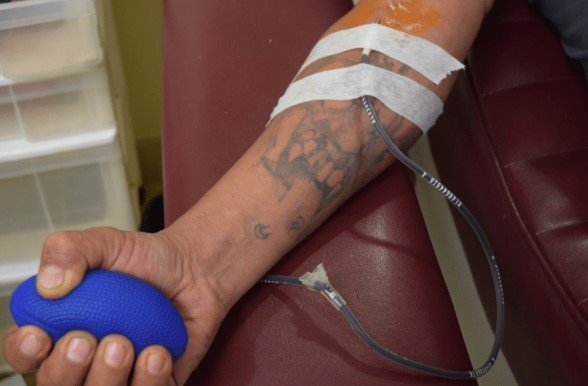A root canal is a dental treatment designed to save a natural tooth that is severely infected or damaged. Dentists perform this procedure to remove the infected inner pulp, clean the tooth, and seal it to prevent future problems. This guide explains what happens during the procedure, the minimal risks involved, and how you can ensure a smooth and quick recovery. Understanding the process can help relieve any anxiety about this common and highly successful treatment.
What Signs Indicate You Might Need a Root Canal?
Recognizing the symptoms of a severe tooth infection can help you seek treatment before the problem worsens. While only a dentist can make a diagnosis, certain signs strongly suggest that the pulp inside your tooth is compromised.
One of the most common indicators is a persistent and severe toothache. This pain might be constant or come and go, but it is often sharp and intense, especially when you bite down. You might also notice that the tooth is extremely sensitive to hot or cold temperatures, with the sensitivity lingering long after the hot or cold item is gone.
Other physical signs are also important to watch for. Swelling in the gums near the affected tooth or a recurring pimple on the gum line are clear signs of infection. The tooth itself may also darken or become discolored, which happens when the inner pulp tissue dies. If you notice any of these symptoms, it is crucial to see your dentist for an examination.
The Root Canal Procedure Step-by-Step
Knowing what to expect can make the root canal process feel much less intimidating. Your dentist or endodontist will ensure you are comfortable throughout the treatment, which is typically completed in one or two visits.
The entire procedure is focused on removing the source of the infection and protecting the tooth from future damage. Modern techniques and anesthesia make the experience similar to getting a routine filling.
Here are the typical steps involved in a root canal treatment:
- Numbing the Area: The first step is the application of local anesthesia to completely numb the affected tooth and the surrounding gum tissue. This ensures you will not feel any pain during the procedure.
- Removing the Infected Pulp: Your dentist will make a small opening in the crown of the tooth to access the pulp chamber. Using specialized instruments, they will carefully remove the damaged or infected pulp.
- Cleaning and Disinfecting: After the pulp is removed, the inside of the tooth is thoroughly cleaned, shaped, and disinfected to eliminate all bacteria.
- Filling and Sealing the Tooth: The clean and empty canals are then filled with a rubber-like, biocompatible material called gutta-percha. A special cement is used to seal the canals completely.
- Placing a Restoration: Finally, a temporary filling is placed to close the opening. You will need to return for a permanent restoration, usually a dental crown, to protect the tooth and restore its full function.
This systematic process is highly effective at resolving pain and saving your natural tooth from extraction.
Understanding the Risks and Complications
While root canal therapy is a very safe and common procedure, it is important to be aware of the potential risks, just as with any medical treatment. Fortunately, complications are rare, and the procedure has a very high success rate.
The most common risk is the possibility of reinfection. This can happen if a small, undetected canal is not cleaned or if the final restoration does not create a perfect seal, allowing bacteria to enter the tooth again. In very rare cases, a dental instrument may break inside the canal or the tooth root could be fractured.
With a success rate of over 95%, root canals are one of the most reliable procedures in dentistry. Choosing a skilled and experienced dentist or endodontist significantly reduces these risks. Following your dentist’s aftercare instructions is also crucial for preventing complications and ensuring the long-term health of your tooth.
What to Expect During Your Recovery
Recovery after a root canal is usually straightforward. Most people can return to their normal activities the very next day. However, it is normal to experience some mild discomfort and sensitivity for a few days as the area heals.
This tenderness is typically manageable with over-the-counter pain relievers like ibuprofen or acetaminophen. Your dentist will provide specific instructions based on your situation. The treated tooth may feel slightly different from your other teeth for a short period, but this sensation will fade.
The table below provides a general timeline of what you can expect during the healing process.
| Timeframe | What to Expect | Tips |
|---|---|---|
| First 24-48 Hours | Mild soreness and sensitivity, especially when biting. | Take pain medication as prescribed. Avoid chewing on the treated side. |
| First Week | Discomfort should gradually decrease. Gums may still be slightly tender. | Stick to soft foods. Continue gentle brushing and flossing. |
| After the First Week | Most symptoms should be gone. The tooth is ready for its permanent crown. | Attend your follow-up appointment to have the permanent restoration placed. |
Essential Aftercare and Oral Hygiene Tips
Proper care after your root canal is key to a fast recovery and the long-term success of the treatment. Your dentist will give you a list of instructions to follow, and adhering to them will help prevent complications and promote healing.
Maintaining good oral hygiene is essential, but you should be gentle around the treated area for the first few days. Continue to brush and floss your other teeth as you normally would.
Here are some important tips for post-procedure care:
- Stick to a soft diet for the first few days. Foods like yogurt, soup, mashed potatoes, and smoothies are great choices.
- Avoid chewing directly on the treated tooth until it has a permanent restoration like a crown. The tooth is more fragile until it is fully restored.
- Take any prescribed medications, such as antibiotics or pain relievers, exactly as directed by your dentist.
- Rinse your mouth with warm salt water two to three times a day to help keep the area clean and reduce inflammation.
If you experience severe pain, significant swelling, or an allergic reaction to medication, contact your dentist’s office immediately. Attending your follow-up appointment to place the permanent crown is one of the most important steps for ensuring the tooth’s durability.
Frequently Asked Questions about Root Canals
Is a root canal procedure painful?
No, a root canal is not a painful procedure. Your dentist uses local anesthesia to completely numb the tooth and surrounding area, so you should feel no pain during the treatment. The procedure is designed to relieve the pain caused by the infection.
How long does a root canal take?
Most root canals can be completed in one or two appointments, with each visit lasting about 60 to 90 minutes. The exact time depends on the complexity of the case and which tooth is being treated.
Do I need a crown after a root canal?
In most cases, yes. A tooth that needs a root canal has often been weakened by decay or a large filling. A crown is necessary to protect the tooth from fracturing and restore its full chewing function.
What is the recovery time for a root canal?
Recovery is usually quick. Most people can resume normal activities the following day. You may experience mild soreness or sensitivity for a few days, which is easily managed with over-the-counter pain medication.
Can a root canal infection come back?
Reinfection is rare but possible. It can occur if the tooth is not properly sealed or if new decay allows bacteria to get inside. Maintaining good oral hygiene and regular dental checkups will help prevent this.






Leave a Comment